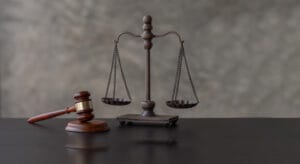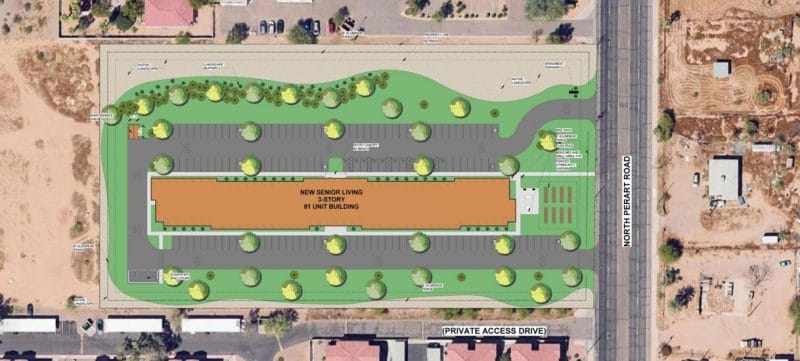By Paul Basha, traffic engineer, Summit Land Management
Center two-way-left-turn lanes seem unsafe to me. Are they?

Center two-way left-turn lanes first appeared in Michigan in the 1950’s. Their greatest national popularity began in Phoenix in the 1970’s. Like all traffic ideas – they are convenient in the correct situations, and less-than-great in other situations. Their benefit on Miller Road in Scottsdale, south of Thomas Road, between Coronado High School and residential streets on the west, and El Dorado Park on the east is obvious.

Both northbound and southbound drivers can turn left without interfering with each other, and without impeding northbound and southbound through traffic.
Incidentally, those El Dorado Park three baseball infields in the aerial photograph? They were the Chicago Cubs spring training practice fields in the late 1960’s. Might explain their 108-year world series championship void.

One problem with center two-way leftturn lanes is their over-use. There’s no place to turn left in either direction on either of the streets in these two aerial photographs. Please, use the land better, avoid the construction and maintenance expense, lessen the heat island effect, and lower travel speeds by not building the center two-way left-turnlane. A time and place for everything, eh?


This photograph indicates one of the difficulties with center two-way left-turn lanes. Two objects attempting to occupy the same space at the same time is never good – especially when they’re moving toward each other. (Though atoms and fish seem to get by just fine.) The difficulty being that the east streets are south of the west streets – opposite of the first aerial photograph.

This three-car situation is another difficulty of center two-way leftturn lanes. The blue mini-van is attempting to use the center twoway left-turn lane as an acceleration lane or waiting lane. The southbound gold car is simply using the center two-way left-turn lane to turn left at the street to travel eastbound. Likely the southbound gold car did not have on its left-turn signal so the driver of the blue mini-van did not know the gold car was intending to turn left until the gold car changed from the through lane into the left-turn lane. The driver of the orangish truck is likely driving at the proper speed staying in front of the following traffic – or perhaps they’re a competitive driver and think that slowing is for sissies.
The law? Arizona Revised Statue 28-751.4. is specifically for center two-way left-turn lanes. In its entirety, it states:
“Two-way left turn lanes. If a special lane for making left turns by drivers proceeding in opposite directions has been indicated by official traffic control devices:
(a) A driver shall not make a left turn from any other lane.
(b) A driver shall not drive a vehicle in the lane except if preparing for or making a left turn from or into the roadway or if preparing for or making a u-turn if otherwise permitted by law.”
Good to know that center two-way left-turn lanes are special.
So, the driver of the blue mini-van was not violating the law, as it clearly states the center twoway left-turn lane can be used for left-turns entering a roadway. A touch more patience waiting before turning left would be appropriate – even if you are forcing a driver of a following rightturning vehicle to also be patient. Rest assured if an actual driver behaved similar to the blue mini-van and caused a collision, a police officer would cite the driver – perhaps for “Improper Turn”, “Unsafe Lane Change”, or “Failure to Yield the Right-of-Way”.
Some police officers have explained that the speed limit in a center two-way left-turn lane is zero miles-per-hour. The lane’s purpose is to be there momentarily, then leave. Other officers clarify that if a driver is moving in a center two-way left-turn lane, they must turn left at the first opportunity.
In addition, sometimes drivers use center two-way left-turn lanes as passing lanes. An interesting method of meeting new people. Though if you like their car enough to meet them, crunching into it is not a good first impression.
Data? Fortunately, an Arizona State University graduate student late last year completed a detailed statistical analysis of 24 years of collision data in the City of Scottsdale.
For roads with one lane-per-direction, roads with a raised median had statistically significantly fewer collisions-per-mile than roads with either only a centerline stripe or with a center two-way left-turn lane. Also, roads with only a centerline had statistically significantly fewer collisions-permile than roads with a center two-way left-turn lane.
For roads with two lanes-per-direction, roads with a raised median had statistically significantly fewer collisions-per-mile than roads with a center two-way left-turn lane. Also, two-lane-perdirection roads with only a centerline had statistically significantly fewer collisions-per-mile than two-lane-per-direction roads with a center two-way left-turn lane. Interestingly, there is no statistically significant difference in collisions-per-mile between two-lanes-per-direction roads with a raised median and two-lanes-per-direction roads with only a centerline.
For roads with three lanes-per-direction, in at least one direction, roads with a raised median had statistically significantly fewer collisions-per-mile than roads with a center two-way left-turn lane. (There are not a sufficient number of three-lanes-per-direction roads in Scottdale with only a centerline for a statistical analysis. Thank goodness! Driving on a three-lane-per-direction road with only a centerline for separation between opposing directions? Someone would not have been thinking.)
Notice traffic engineers rarely state that a road configuration is more safe or less safe than another road configuration. We rarely say that a road configuration is hazardous either. Traffic engineers might say that a roadway configuration has a greater than reasonable opportunity for collisions. More likely, we’ll simply report data.
Are center two-way left-turn lanes safe? In Scottsdale from 1995 through 2018, there were more collisions-per-mile on roads with center two-way-left-turn lanes than roads with only a centerline or roads with medians. Do we need more data?
CITY OF SCOTTSDALE ROADS: 1995 to 2018
COLLISIONS-PER-MILE
MOST

LESS

LEAST

Though center two-way left-turn lanes are often convenient.
Curious about something traffic? Call or e-mail Paul at (480) 505-3931 and pbasha@summitlandmgmt.com.








